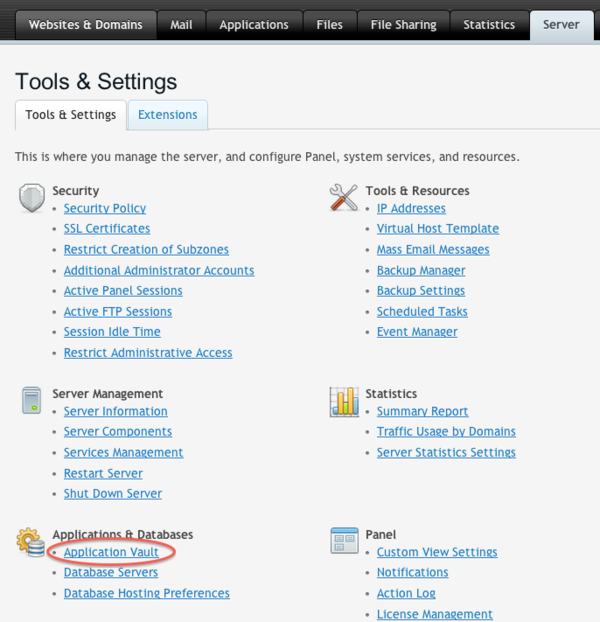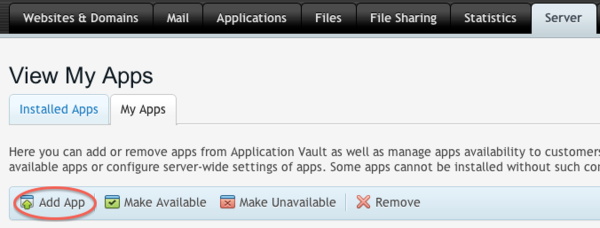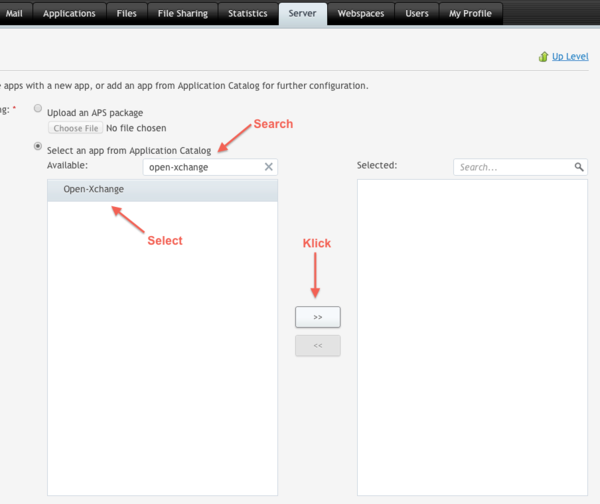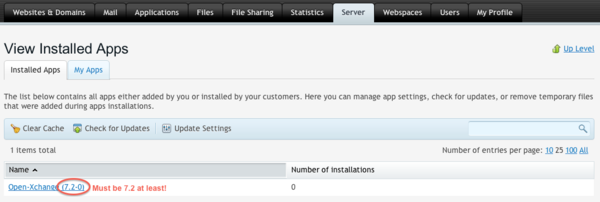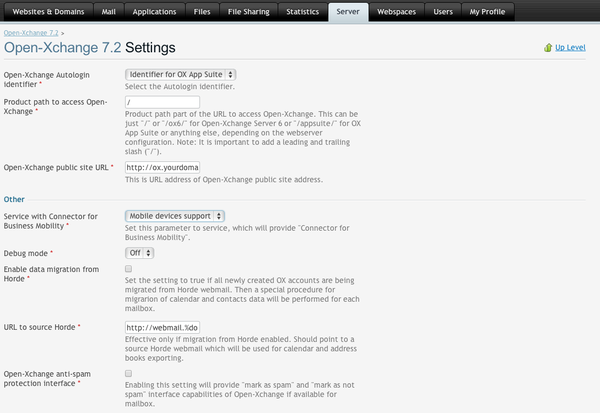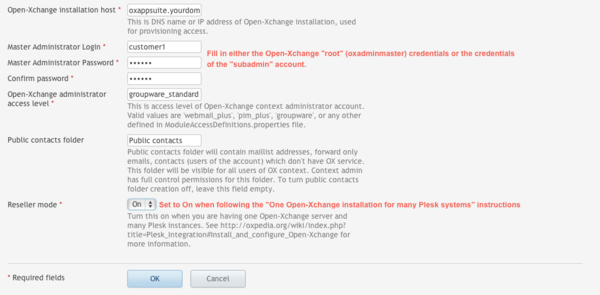Plesk Integration: Difference between revisions
No edit summary |
No edit summary |
||
| Line 52: | Line 52: | ||
open-xchange-parallels open-xchange-admin-soap-reseller | open-xchange-parallels open-xchange-admin-soap-reseller | ||
=== Create and manage subadmin accounts === | |||
As explained in more details in the article about the [[Reseller_Bundle|Reseller Bundle]], you have to create subadmins | |||
that you can hand over to your individual Plesk customers/resellers. This article explains on how to do that using the | |||
command line as provided by Open-Xchange. Of course the same management can be done via [[Open-Xchange_Provisioning_using_SOAP|SOAP]] and | |||
via [http://software.open-xchange.com/OX6/doc/RMI/ RMI]. | |||
== General Open-Xchange Configuration == | == General Open-Xchange Configuration == | ||
Revision as of 08:32, 27 August 2013
Integrate Open-Xchange with Plesk
WORK IN PROGRESS
This document describes how to integrate Open-Xchange with Plesk.
Requirements
In order to integrate Open-Xchange with Plesk, the Open-Xchange APS package must be used. This requires the following versions of Plesk and the APS package:
- Open-Xchange APS package version 7.2 and above (Not yet available).
- Parallels Plesk Panel version 11.5 and above
Older versions are not supported.
Download
Download the APS package from the APS catalogue
Install and configure Open-Xchange
Before you continue, you have to find out your requirements on how to integrate your Plesk instance(s) with Open-Xchange. There are two possible scenarios:
- One Open-Xchange installation for one Plesk Installation
- You want to serve one Plesk system with one single Open-Xchange installation or you are the only one managing the Plesk servers.
- One Open-Xchange installation for many Plesk systems (Reseller Mode)
- You want to resell many Plesk systems but only use one single Open-Xchange installation.
Note: Finding the correct scenario is important as it is hard to change later!
The main problem is, that usually on Open-Xchange, you have ONE single "root" account to provision contexts/tenants in Open-Xchange. The name of this account is usually oxadminmaster, but it can be renamed to what ever you like. Now imagine there's a scenario where not you, but your customers should create contexts. This is usually the case when you are a reseller. In this case you do not want to hand out that single "root" account to all your customers.
Fortunately, Open-Xchange has a solution for that. It is called the Reseller_Bundle.
Roughly summarised, if you are a Reseller you most likely need Plesk_Integration#One_Open-Xchange_installation_fo_many_Plesk_systems
One Open-Xchange installation for one Plesk Installation
Follow one of the Open-Xchange installation guides to install Open-Xchange and in addition, install the following package:
open-xchange-parallels
One Open-Xchange installation for many Plesk systems (Reseller Mode)
Follow one of the Open-Xchange installation guides to install Open-Xchange and in addition, install the following package:
open-xchange-parallels open-xchange-admin-soap-reseller
Create and manage subadmin accounts
As explained in more details in the article about the Reseller Bundle, you have to create subadmins that you can hand over to your individual Plesk customers/resellers. This article explains on how to do that using the command line as provided by Open-Xchange. Of course the same management can be done via SOAP and via RMI.
General Open-Xchange Configuration
Add the parameter
com.openexchange.login.formLoginWithoutAuthId=true
to /opt/open-xchange/etc/login.properties
Plesk Configuration
Add Application via Application Vault
Check version requirement
Check that the version of the APS package is at least 7.2. Older versions are neither supported nor will they work in all circumstances.
